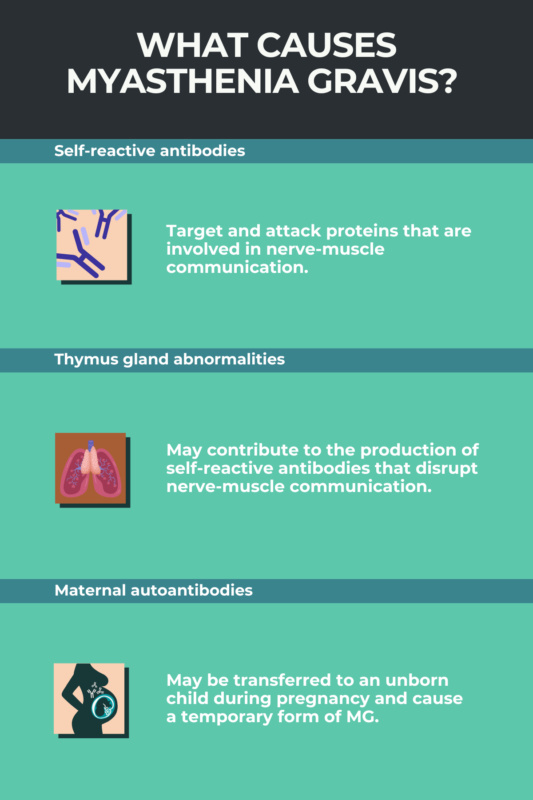 Discussion
Discussion
FAQs about myasthenia gravis causes
Myasthenia gravis can be diagnosed in people of all sexes, ages, races, and ethnicities, but is most commonly seen in adult women younger than 40 and in elderly men or those older than 60. There are no well-established clinical risk factors for the development of myasthenia gravis.
The main cause of myasthenia gravis is the immune system’s production of self-reactive antibodies that target acetylcholine receptors — proteins that are important for nerve-muscle communication. While the exact origin of these antibodies is not well established, it is thought that abnormalities in the thymus gland may be involved in their appearance.
Myasthenia gravis is caused by the immune system’s production of self-reactive antibodies that disrupt nerve-muscle communication, and thus it is considered to be an autoimmune disease.
Although the disease mechanisms of myasthenia gravis are not expected to cause pain, many patients report experiencing this symptom somewhat regularly. It is possible that pain arises secondarily to generalized muscle weakness, which can lead to changes in posture that cause nonspecific muscle or joint aches.
Myasthenia gravis is generally not caused by genetic factors and its symptoms more commonly emerge in adulthood. In rare cases, babies born to mothers with myasthenia gravis also may have the condition, but it is usually temporary and goes away in the first months of life. Individuals with congenital myasthenia are born with mutations that affect nerve-muscle communication, but this is considered to be a distinct clinical condition.
 Fact-checked by
Fact-checked by 




